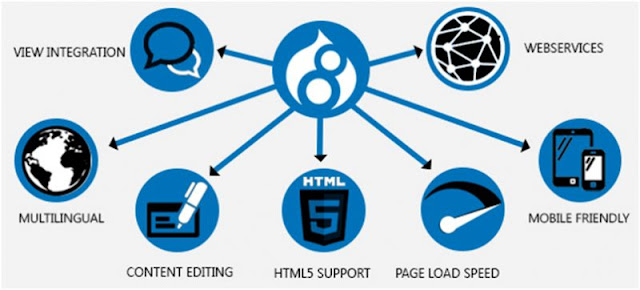 |
| "What is Drupal?" - The Basic Things you need to know about Drupal |
"What is Drupal?" - The Basic Things you need to know about Drupal
Drupal is a free, open-sourced, multi-purposes as well as popular Content Management System (CMS) that allows organizing, managing & publishing your content. It is built on PHP based environments. This is carried out under GNU i.e. General Public Licence, which means everyone has the freedom of downloading and sharing it with others. Drupal is used on million sites such as WhiteHouse.gov, World Economic Forum, Stanford University, Examiner.com, and many more.
What is Content Management System (CMS)?
The Content Management System (CMS) is a software that keeps all the data of your content (such as text, photos, music, documents etc.) which will be available on your website. A CMS helps in editing, publishing, and modifying the content of the website.
History about Drupal
The standard release of Drupal known as Drupal core was developed by Dries Buytaert in January 2001. It is considered as leading CMS in a variety of industries.
Reason Behind why to use Drupal?
In case, you are going to develop a website with the content management system (CMS) then Drupal CMS is very flexible than any other CMS. It is very powerful and can be used for building large and complex sites. It is PHP based template and allows non-technical users to add and edit the content without any HTML, CSS, PHP, or coding knowledge. Using Drupal CMS, it can be easy to interact with other sites or technologies and can handle complex forms and workflows. It is available with more than 16000 modules which can be addressed with Drupal core and add-on modules.
Features of Drupal CMS
- It makes it easy to create and manage your site.
- Translates anything in the system with built-in user interfaces.
- It connects your website to other sites and services using feeds, search engine connection capabilities, etc.
- Drupal is open-source software hence requires no licensing costs.
- It designs a highly flexible, creative website to the users and displays more effectively to increase the visitors.
- Drupal can publish your content on social media such as Twitter, Facebook, and other social mediums.
- Drupal provides more number of customizable themes, including several base themes that are used to design your own themes for developing web applications.
- It manages the content on informational sites, social media sites, member sites, intranets, and web applications.
Advantages of Drupal CMS
Drupal is a flexible CMS that allows handling content types including video, text, blog, menu handling, real-time statistics, etc.
It provides several templates for developing web applications. So there is no need to start from scratch if you are building simple or complicated web applications.
Drupal is easy to manage or create a blog or website. It helps to organize, structure, find, and reuse content.
Drupal provides some interesting themes and templates which give your website an attractive look.
Drupal has over 7000 plug-ins to boost your website. Since Drupal is open-source, you can create your own plug-ins.
Disadvantages of Drupal CMS
Drupal is not user friendly interface. It requires advanced knowledge and few basic things about the platform to install and modify.
Drupal is a new content management system. It is not compatible with other software.
Performance is low compared to other CMS's. The website which is built using Drupal will generate big server loads and never opens with a slow internet connection.





